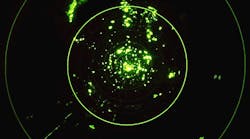Disaster often strikes—whether it is a mining accident, earthquake, terrorist event, or something else. When it does, we find ourselves glued to the news, hoping for the proverbial “silver lining” amidst tragedy—like news of victims who have survived and can be found and saved. In the process of executing such search-and-rescue missions, however, our public-safety, military, and other forces often put themselves in harm’s way. Ideally, those professionals would be able to identify whether there were any victims still alive and pinpoint those victims’ locations without having to traverse the entire disaster area.
The goal of providing such capability has been taken on by NASA and the US Department of Homeland Security. They have partnered on the development of a portable radar device that detects the heartbeats and breathing patterns of victims trapped in large piles of rubble. Their prototype, which is dubbed Finding Individuals for Disaster and Emergency Response (FINDER), can locate individuals buried as deep as 30 ft. (roughly 9 m) in crushed building materials. In addition, it can detect persons hidden behind 20 ft. (about 6 m) of solid concrete and from a distance of 100 ft. (about 30 m) in open spaces.
FINDER is based on remote-sensing radar technology, which was created by NASA’s Jet Propulsion Laboratory (JPL) in Pasadena, CA. The technology works by beaming microwave radar signals into debris piles and analyzing the signal patterns that are received in return. Similar radar technology is used in NASA’s Deep Space Network to locate spacecraft. Here, a light wave is sent to a spacecraft. The distance to that spacecraft is judged by the time it takes for the signal to return. The signal processing also is the same, as the processing approach that is used to detect small changes in the Cassini mission’s orbit around Saturn can pinpoint small motions from a victim’s heartbeat and breathing—all from a distance.
In disaster scenarios, of course, radar signals face additional complexity. Because earthquakes and tornadoes produce twisted and shattered wreckage, for example, any radar signals bouncing back from those piles will contain countless reflections and be difficult to decipher. Thanks to JPL’s data-processing expertise, advanced algorithms can isolate the tiny signals from a person’s moving chest by filtering out other signals, such as those from moving trees and animals.
News of FINDER, which will undergo testing by the Federal Emergency Management Agency (FEMA) through 2014, has garnered a lot of attention. In addition to being excited about its capabilities, people are impressed that it serves as a successful example of intergovernmental collaboration. Amidst the government shutdown and other gloomy news, this report of a successful collaboration certainly is heartening.
